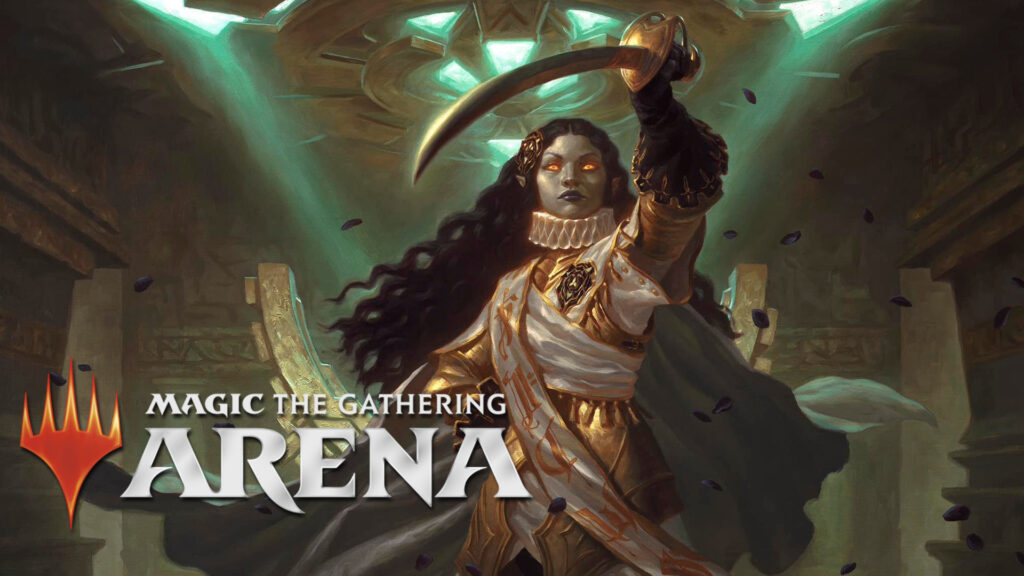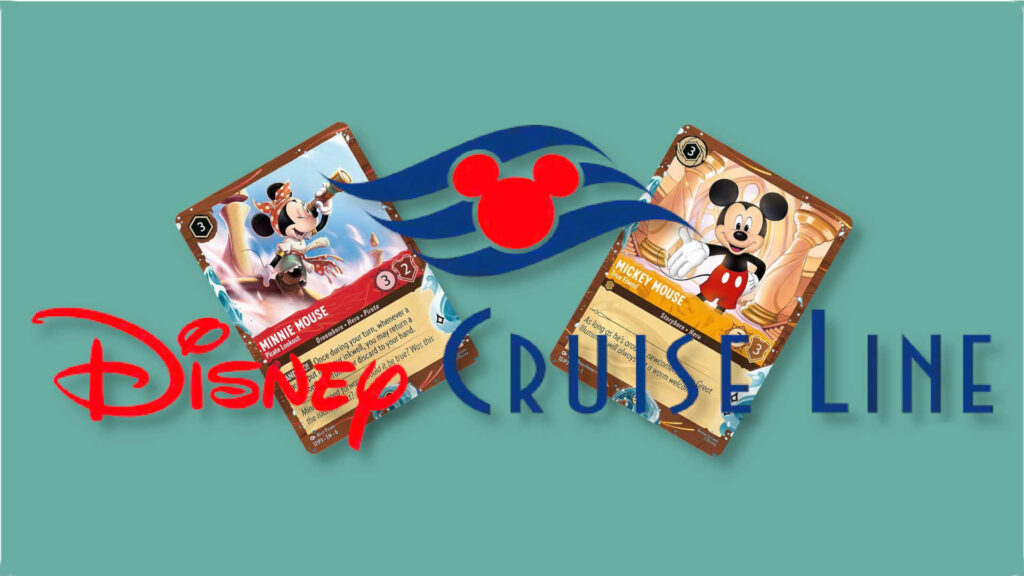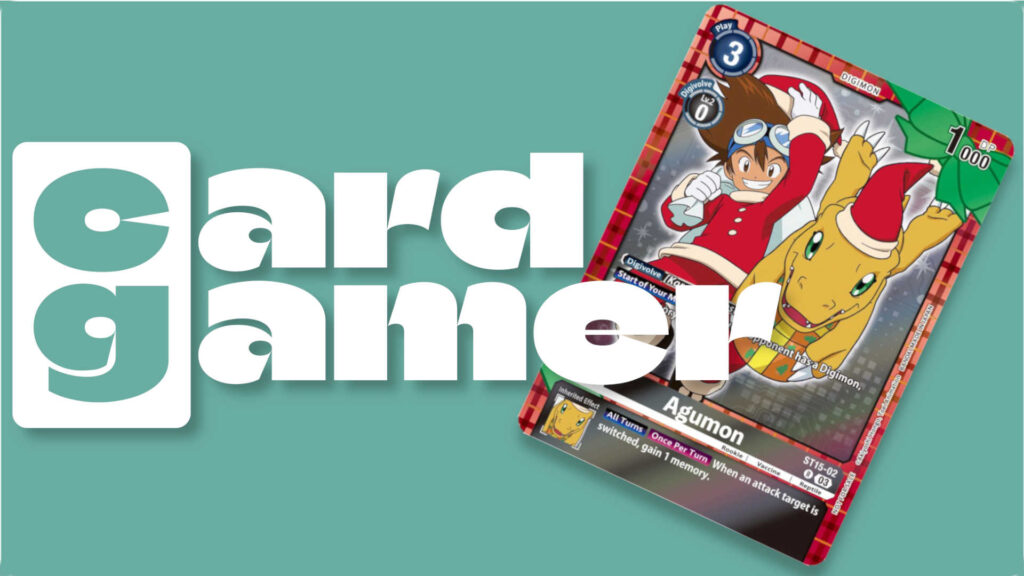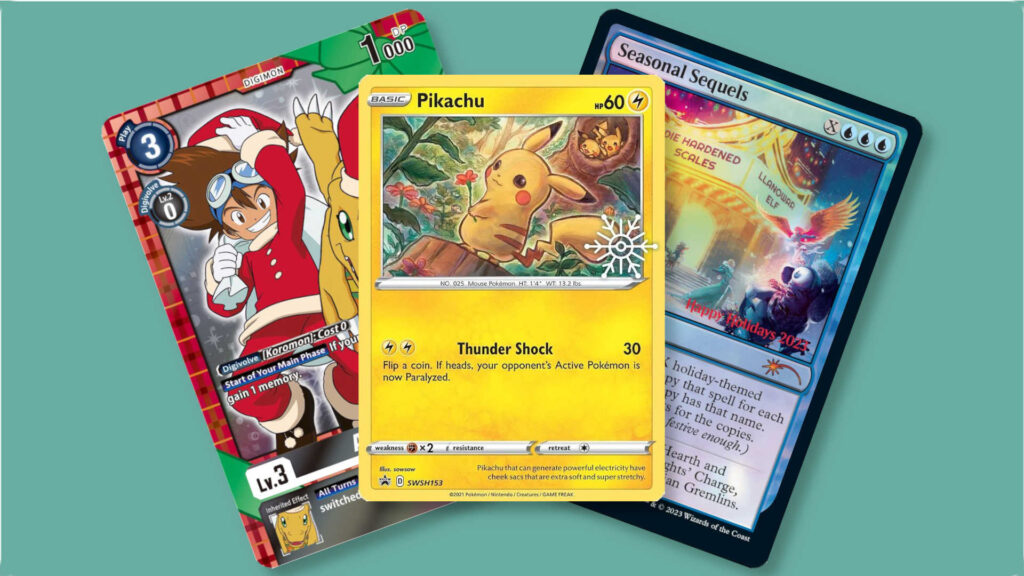Table of Contents
ToggleWhat Is Brawl on Magic Arena?
If you’re new to Magic Arena and are curious about the Brawl format, you’ve come to the right place! I’ve been playing on Arena for five years now, and playing Brawl for much of that time. It’s my preferred way to play on Arena for a quick game.
Brawl was originally designed as a spin on Commander for multiplayer paper games that only used the Standard card pool. The biggest difference with the two formats is that in Brawl you can choose a planeswalker as your commander, instead of the usual legendary creatures allowed in Commander.
Like Commander, the creature or planeswalker you select as your commander determines the color identity of the cards you can play in your deck, and also like Commander, you can only have a single copy of any particular card in your deck, other than basic lands. This is one of the big appeals of the format, because you only need a single copy of a card for your deck, unlike the other competitive formats where you typically want to have up to four copies of your key cards, which will eat up your wildcards quite quickly.
Arena’s version of Brawl is very different because Arena doesn’t currently support multiplayer gameplay. So Brawl on Arena is just another duel format where two players duke it out for victory. As such, it’s typically just as cut-throat and competitive as any of the other competitive formats like Standard or Historic.
Arena offers two versions of Brawl, with both being best-of-one play:
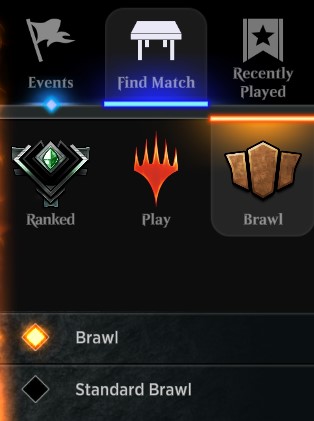
Brawl – 100-card (including your commander) singleton of eternally-legal cards
Standard Brawl – 60-card (including your commander) singleton of Standard-legal cards
If you’re just starting to build your Magic Arena collection, I’d recommend building a Standard Brawl deck first. Over time, once you’ve cracked open older booster packs and accumulated wild cards you can turn in for older cards that you may want, you can start to build 100-card Brawl decks drawn from all the cards available on Arena, including the Alchemy cards!
Building Your First Standard Brawl Deck
Go to the Decks folder, and then click on the big plus sign to add a new deck.
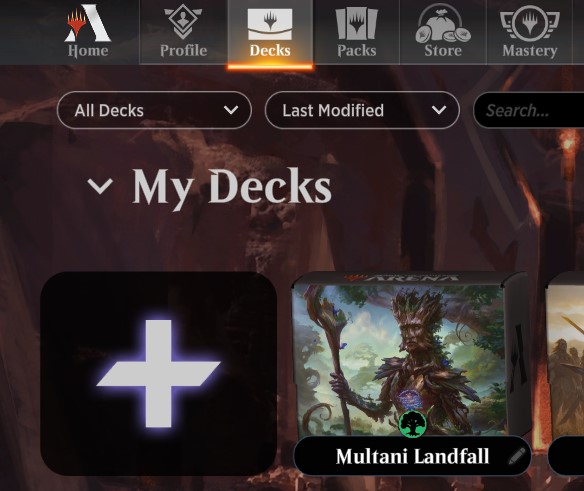
Select Format as Standard Brawl.
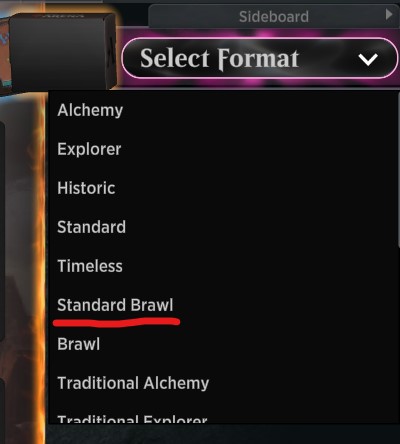
Once you’ve done that, you’ll go to the deckbuilding screen, and the first thing it will ask you to do is pick your Commander, and it will display all of the available choices that you have available in your collection. Notice that you can choose legendary creatures such as Giada, Font of Hope, or planeswalkers like Archangel Elspeth.
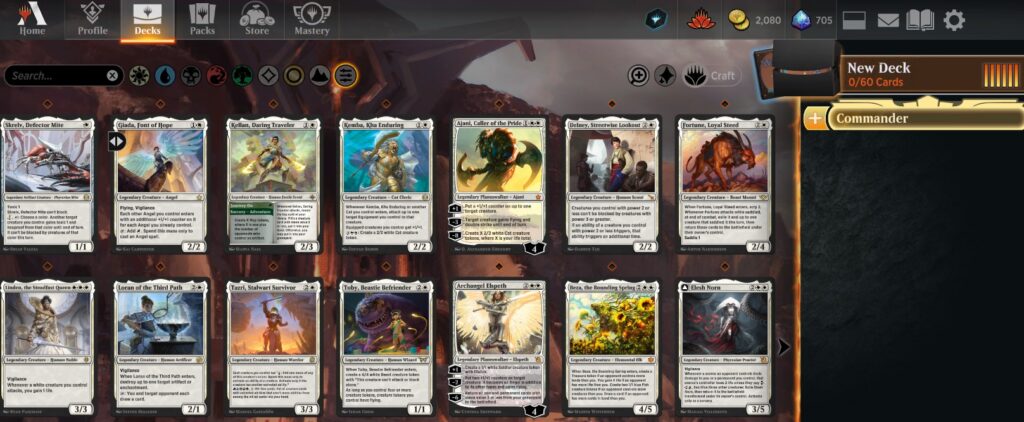
Scroll through your choices until you find a commander that looks fun to you. For this guide, I’m picking Elenda, Saint of Dusk, a black and white legendary Vampire Knight that has a bunch of nifty abilities, not least of which is hexproof from instants. This means it can’t be targeted by your opponent’s instant spells; in Brawl people pack a lot of instant-speed removal spells.
Interaction – Destroy Effects
The first thing I look for to start my decklist is interaction, and in white and black that starts with the card text “destroy.” Here are the white cards I added:
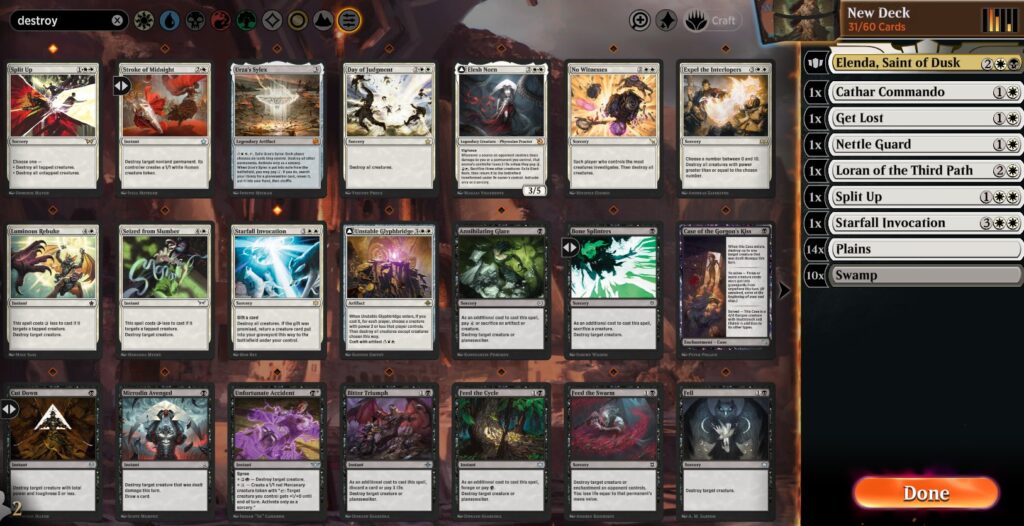
Cathar Commando is a flexible removal spell for an enchantment or artifact attached to a body that can attack if you don’t need to destroy something. Get Lost is prime removal in Brawl because it can destroy nearly any commander whether it’s a creature or planeswalker – or an enchantment in a pinch! Loran of the Third Path is excellent for destroying an artifact or enchantment, and if you need to draw a card it can do that at a cost of giving your opponent one too.
Split Up is an incredibly low-cost battlefield sweeper that you can work around to try and ensure one or more of your creatures survive, depending on if creatures are tapped or not. And Starfall Invocation is an unconditional battlefield sweeper for creatures, with an optional gift cost that can bring one of your creatures that died back to the battlefield.
Looking at the black cards with “destroy” in the text, here’s what I chose to add:
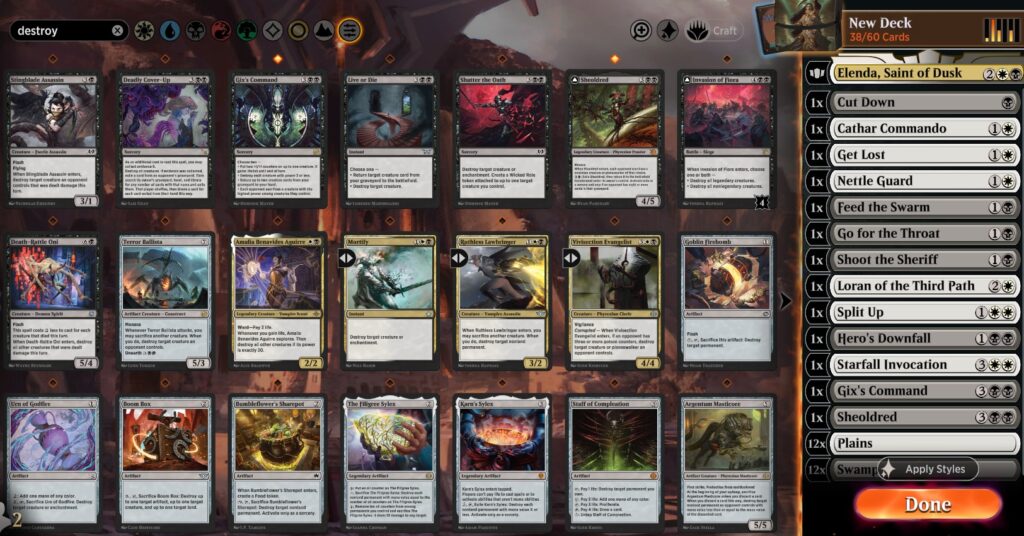
Cut Down, Go for the Throat, and Shoot the Sheriff provide excellent and efficient creature removal spells. Feed the Swarm gives some flexibility to destroy a problematic enchantment or creature, while Hero’s Downfall could take down an opponent’s planeswalker commander.
Gix’s Command can often rid an opponent’s battlefield of small creatures, and the temporary lifelink option synergizes nicely with my commander’s abilities. Lastly, Sheoldred gives you the potential to get around protection abilities by forcing a sacrifice – and its ability to transform later in the game can be back-breaking.
Interaction – Exile
I also like to search for the word “exile” since some removal spells and other interaction effects exile cards that your opponent controls. Here are the ones I’ve added to the deck:
Sheltered by Ghosts is an overpowered Magic card, and if you can feasibly run it in your deck, you should. And it’s an uncommon, so if you haven’t cracked one in a Duskmourn: House of Horror booster pack, you’ve probably got plenty of uncommon wildcards you can use to get one. It can exile any nonland permanent that’s causing you problems, and it adds +1/+0, lifelink, and ward 2 to the enchanted creature. Lifelink synergizes with Elenda, so you may want to put it on another creature you control, but even though lifelink doesn’t stack, you should feel fine enchanting Elenda with it since she has hexproof from instant and sorcery spells, which makes her tough to remove.
Deep-Cavern Bat gives you useful information about what’s in your opponent’s hand, and exiles a key card from it so long as the Bat remains on the battlefield. Trapped in the Screen is a flexible removal spell for the mid-game, and for the late-game Kaya, Intangible Slayer is a powerful and flexible utility planeswalker.
Mana Ramp
If you’re playing green in your deck, use the words “library” and either “land” or “Forest” to search for cards that will help you develop your mana ahead of curve. If you’re not playing green, you’ll want to rely on artifacts that provide mana, so you can search for “add” to reveal those. The options in Standard for nongreen decks are a bit limited, but there are some good ones:
Arcane Signet was designed specifically with Brawl in mind and was put in the paper Brawl decks Wizards of the Coast published to support the format when it first came out. It’s since become a staple in Commander and is something that every Brawl deck on Arena has access to. No matter how many colors your commander is, it’s there to fix your colors and accelerate your mana. The Irencrag is another two-mana artifact you’ll want to run, though it only provides colorless mana. At three mana there’s the awesome Relic of Legends, which synergizes particularly well if you’re playing a legendary creature as your commander, giving you some extra mana if you need it!
Other Ways To Gain Life
Next I searched for “lifelink” for other creatures with lifelink that can help keep my life total high enough that Elenda’s full text box can be utilized.
Healer’s Hawk, Ruin-Lurker Bat, and Brightblade Stoat can come down early and start buffing your life total so it’s higher than your starting total by the time Elenda hits the battlefield. Phyrexian Missionary and Nullpriest of Oblivion can come down on turn two for some lifelink action, or if you draw it later you can kick it for some extra benefit.
Enduring Innocence has lifelink but can also draw some extra cards, which is always welcome. Gumdrop Poisoner‘s Adventure side makes a Food you can cash in for life, and then when you cast the creature side if you’ve gained life it will function as a creature removal spell, then stick around as a lifelink creature. Phyrexian Fleshgorger can be cast early for a smaller version with its prototype ability, or if you draw it later you can cast it for its full glorious size.
Next I went looking for other cards that can gain life, putting “gain life” into the search bar. There weren’t too many options, but these are the two I picked:
Authority of the Consuls can gain a lot of extra life against other creature decks, and completely hoses any opposing creatures that have haste. Hinterland Sanctifier is a cute Rabbit that can rack up some life since this deck has a good number of creatures.
Lifegain Payoffs
The commander Elenda gives you payoffs for life gain, but why stop there?
Exemplar of Light is here to draw a few extra cards, and over the course of a few turns it can grow to be a sizeable flying threat. Leyline of Hope makes your life gain better, and once you get to a certain life total it boosts all your creatures, potentially ending the game quicker than your opponent expects! Lastly there’s Enduring Tenacity, which turns life gain for you into life drain for your opponent.
Drawing Cards
Drawing cards is one thing you should look to add to your Brawl decks whenever you can, since the more cards you see, the more options you have. Some of the cards I’ve added so far have card draw effects attached, but I went looking for some more, typing “draw card” into the search bar:
Many of the best black card draw spells make you lose life, like Gix, Yawgmoth Praetor and Gruesome Realization, which can be a little awkward if it ends up making Elenda less powerful – but sometimes you need to dig for answers or more land drops. Solemn Simulacrum is fantastic for nongreen decks, letting you ramp a basic land, and then drawing an extra card when it dies. And if you have some extra mythic rare wildcards, Liliana, Dreadhorde General is a great card in general, giving you creature removal options in addition to making Zombie tokens and drawing cards when your creatures die.
Picking Lands for Your Brawl Deck
When you have two or more colors, fixing your colors is incredibly important. Some of the land choices are better than others, but even if most of what you have are the uncommon or common choices, I’d play them to increase the chances of you having the right colors you need to cast your spells. I ended up with seven lands that produce my two colors of mana, seven Swamps and seven Plains, and three lands that offer some utility. Don’t forget to use the “Suggest Lands” feature once you’ve picked your nonbasic lands to let the computer figure out the right mix of basic lands!
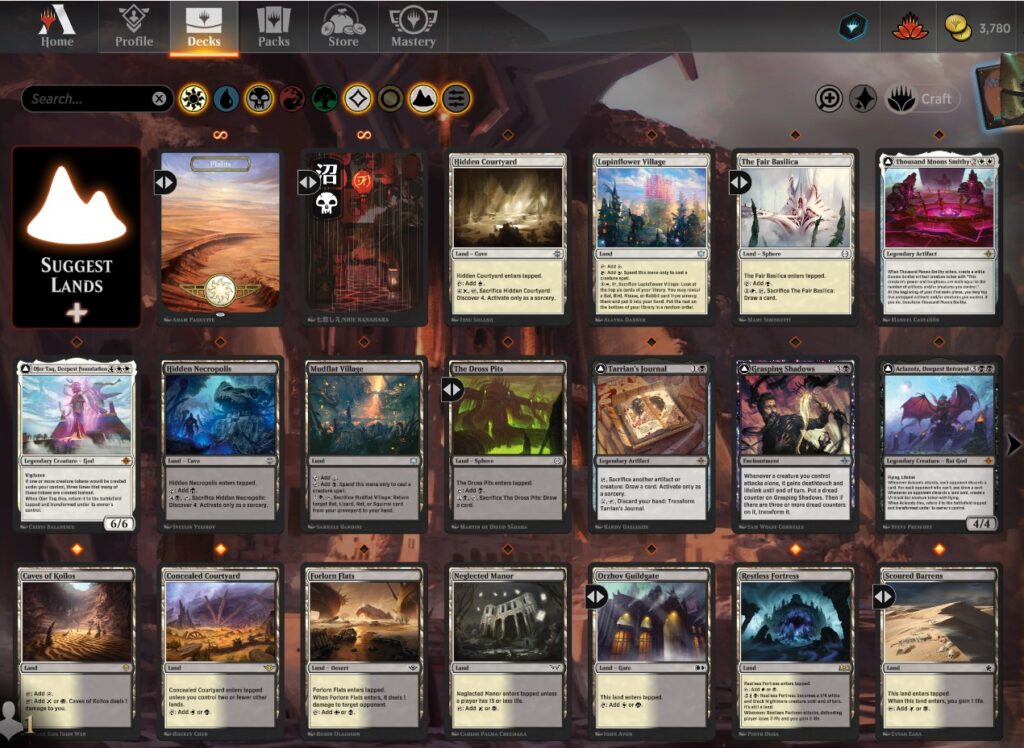
Once you’re finished, don’t forget to adjust the deck’s cosmetics if you’d like. Click on Deck Details, and then you can select the Avatar, Card Sleeve, and Companion you want to have when you play the deck. For this one I picked Liliana Vess as the Avatar, for the sleeve a vampire woman who I imagine might be a fan of Elenda if they knew each other, and the companion is the Halloween Cerebus with pumpkin heads to round out the spooky theme.

Here’s a picture of how the deck ended up looking:
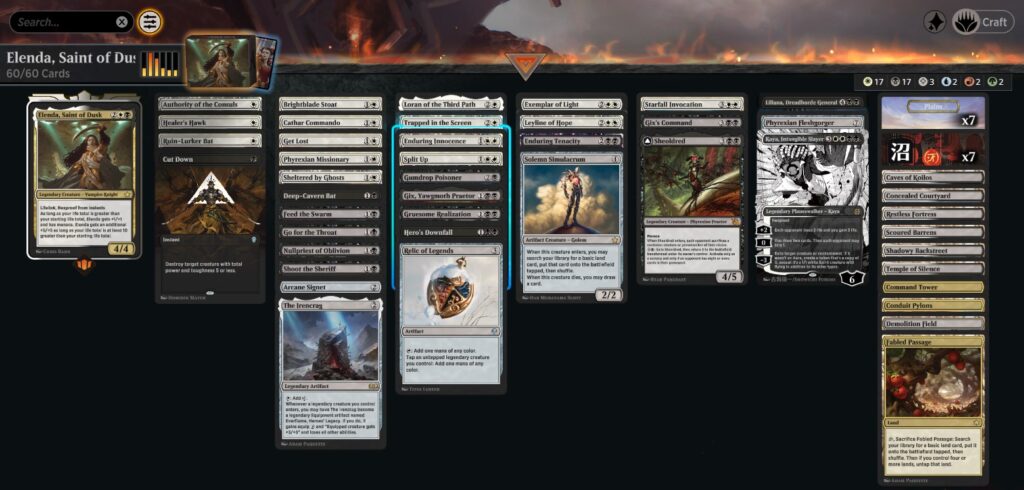
And here’s the decklist:
Are there any other cards you’d run in an Elenda, Saint of Dusk deck? Which commander would you want to build in Standard Brawl?
Want more info on getting started in Arena? Then check out our Beginner’s Guide to Playing on Magic Arena.

